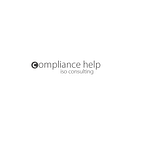The Right Ways to Implement a Quality Assurance System
How to implement the quality assurance system? This is a rather a common question researched online especially questions related to the ISO 9001 clauses and certifications. Regardless of size and type, business organisations desire to invest in quality management/assurance systems that will provide you with comprehensive assistance. Managing quality is the fundamental criterion for meeting customer expectations. If a company is aware of the right process for implementing or modifying the management system, it becomes easier to be compliant. The present article will this in further detail.
A basic guide to implementing the quality assurance system
Define Objectives and Scope
● Identify Goals: Clearly define the objectives of the QA (Quality Assurance) system, such as improving product quality, enhancing customer satisfaction, or complying with regulatory requirements.
● Determine Scope: Determine the scope of the QA system, including which processes, products, and services will be covered.
2. Obtain Management Commitment
● Leadership Support: Ensure top management is committed to the QA initiative. Their support is crucial for allocating resources and driving the culture change needed for successful implementation.
● Policy Statement: Develop a quality policy statement that reflects the organisation’s commitment to quality and is communicated throughout the organisation.
3. Form a QA Team
● Assemble Team: Create a cross-functional team responsible for developing, implementing, and maintaining the QA system.
● Assign Roles: Clearly define the roles and responsibilities of team members.
4. Conduct a Gap Analysis
● Assess Current State: Evaluate the current quality management practices and compare them against the requirements of the chosen QA standard (e.g., the ISO 9001).
● Identify Gaps: Identify gaps and areas for improvement.
5. Develop a QA Plan
● Action Plan: Develop a detailed action plan to address the identified gaps. Include specific actions, timelines, resources required, and responsible persons.
● Milestones: Set SMART objectives to track progress.
6. Document Processes and Procedures
● Standard Operating Procedures (SOPs): Develop and document SOPs for all critical processes.
● Quality Manual: Create a quality manual that outlines the QA system, including policies, procedures, and responsibilities.
7. Implement the QA System
● Process Integration: Integrate QA practices into daily operations. Ensure that quality checks and controls are part of the regular workflow.
● Resource Allocation: Allocate the necessary resources, including tools, technologies, and training, to support the implementation.
8. Train Employees
● Training Programs: Develop and deliver training programs to educate employees about the QA system, their roles, and the importance of quality.
● Continuous Education: Promote ongoing education and training to keep employees updated on best practices and new standards.
9. Monitor and Measure Performance
● KPIs and Metrics: Establish key performance indicators (KPIs) and metrics to monitor the effectiveness of the QA system.
● Regular Audits: Conduct regular internal audits to ensure compliance with the QA system and identify areas for improvement.
10. Review and Improve
● Management Reviews: Hold regular management reviews to evaluate the performance of the QA system, discuss audit findings, and make strategic decisions for continuous improvement.
● Corrective Actions: Implement corrective and preventive actions based on audit findings and performance data.
11. Engage with Stakeholders
● Stakeholder Communication: Maintain open lines of communication with stakeholders, including employees, customers, suppliers, and regulatory bodies, to gather feedback and ensure their requirements are met.
● Customer Feedback: Use customer feedback to identify areas for improvement and enhance customer satisfaction.
It would be devastating if the quality assurance system fails under the third-party surveillance audit before certification is granted. It is therefore best to consult with experts for a successful implementation.
Author Bio — After serving in the ISO consultancy agency for more than 30 years, the author now invests his time writing articles and blogs on international certifications.
